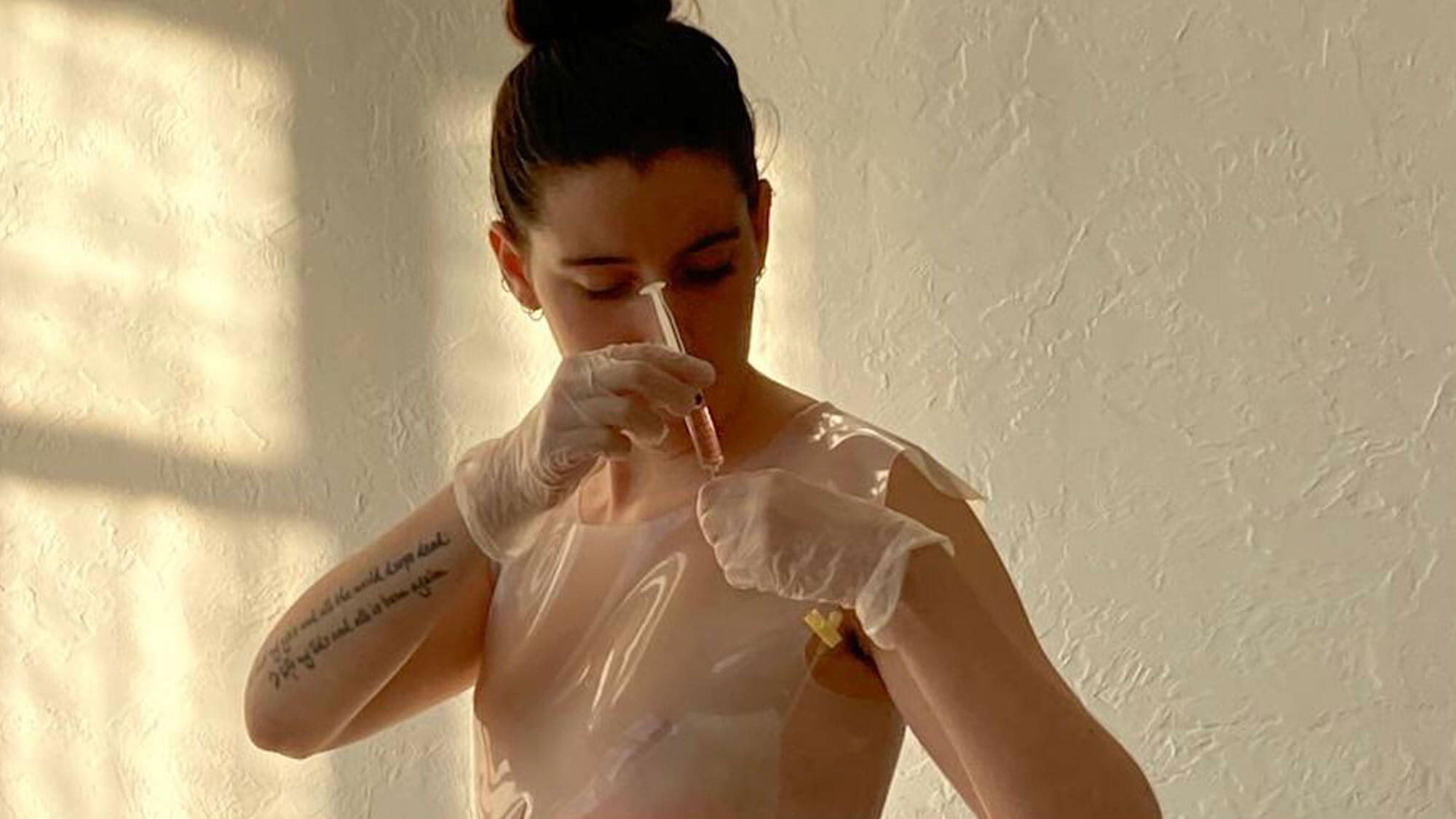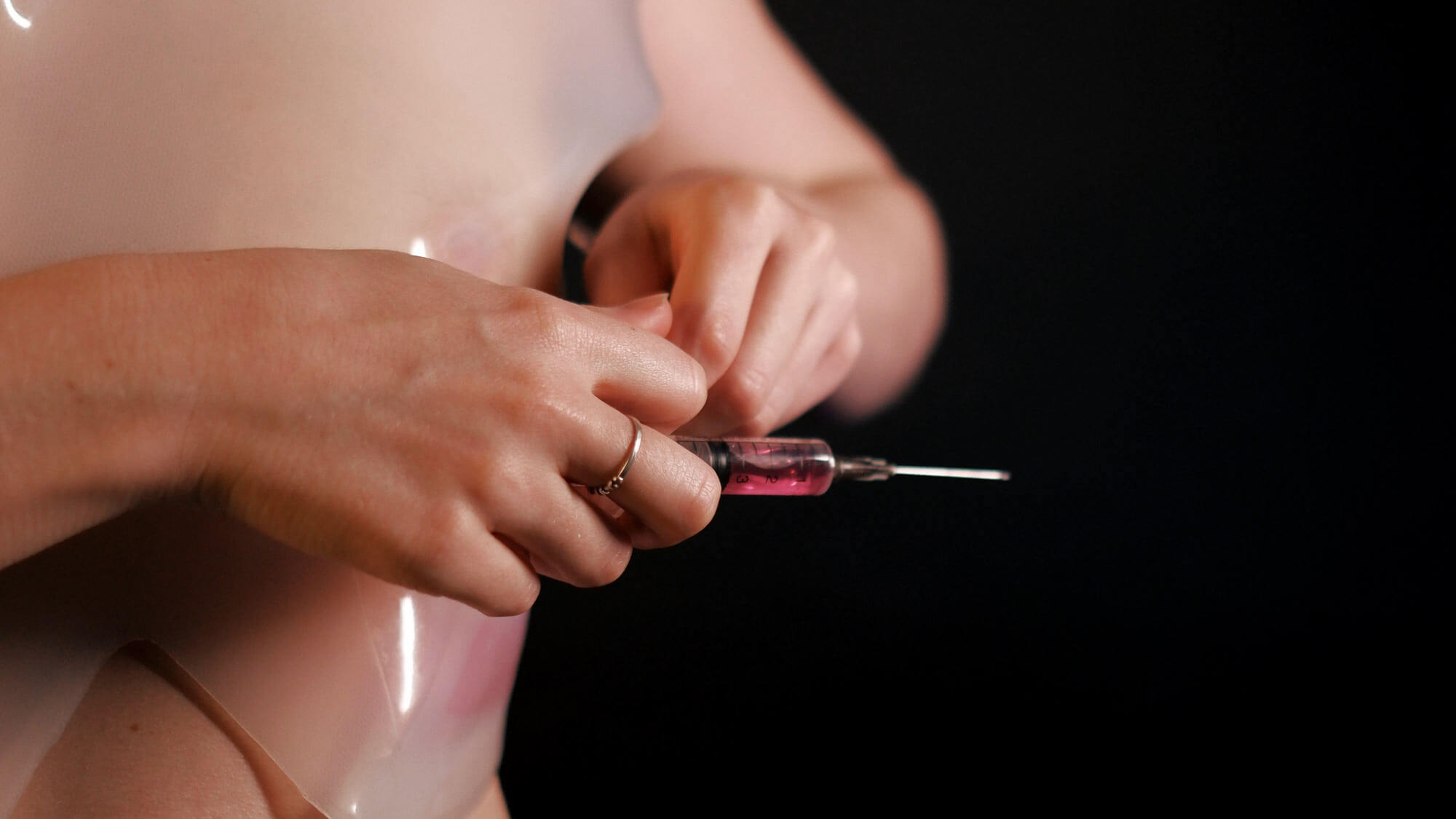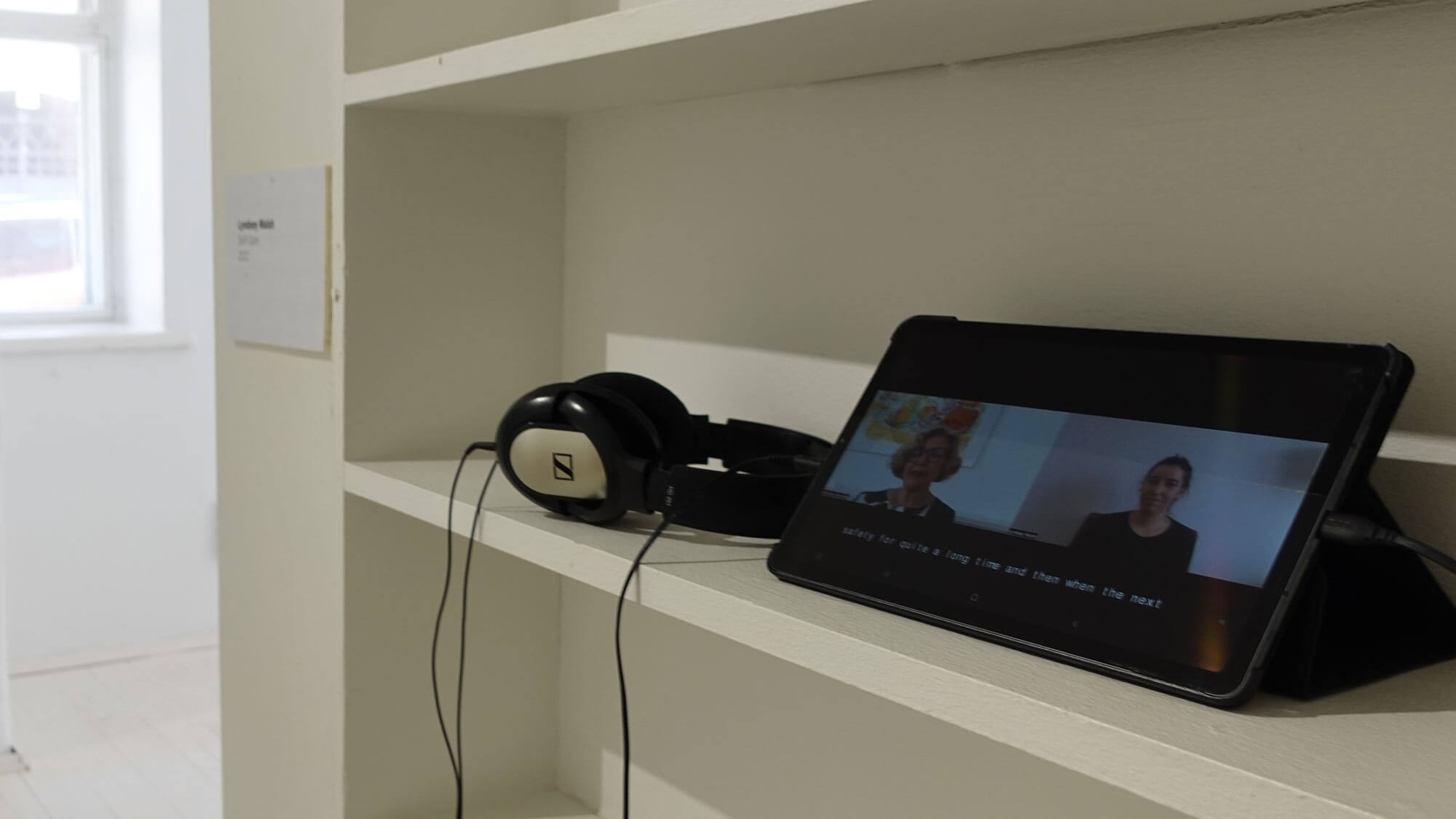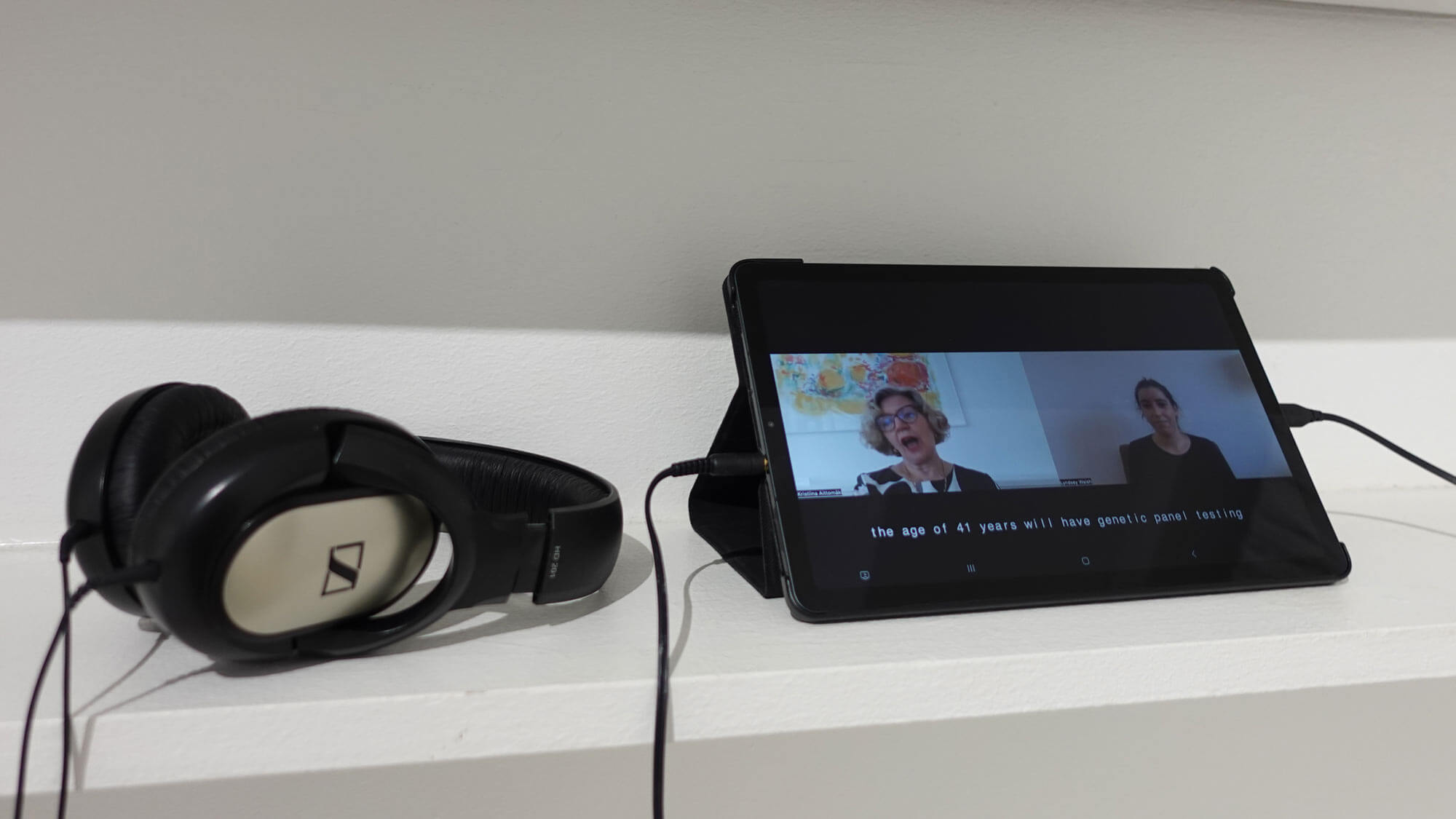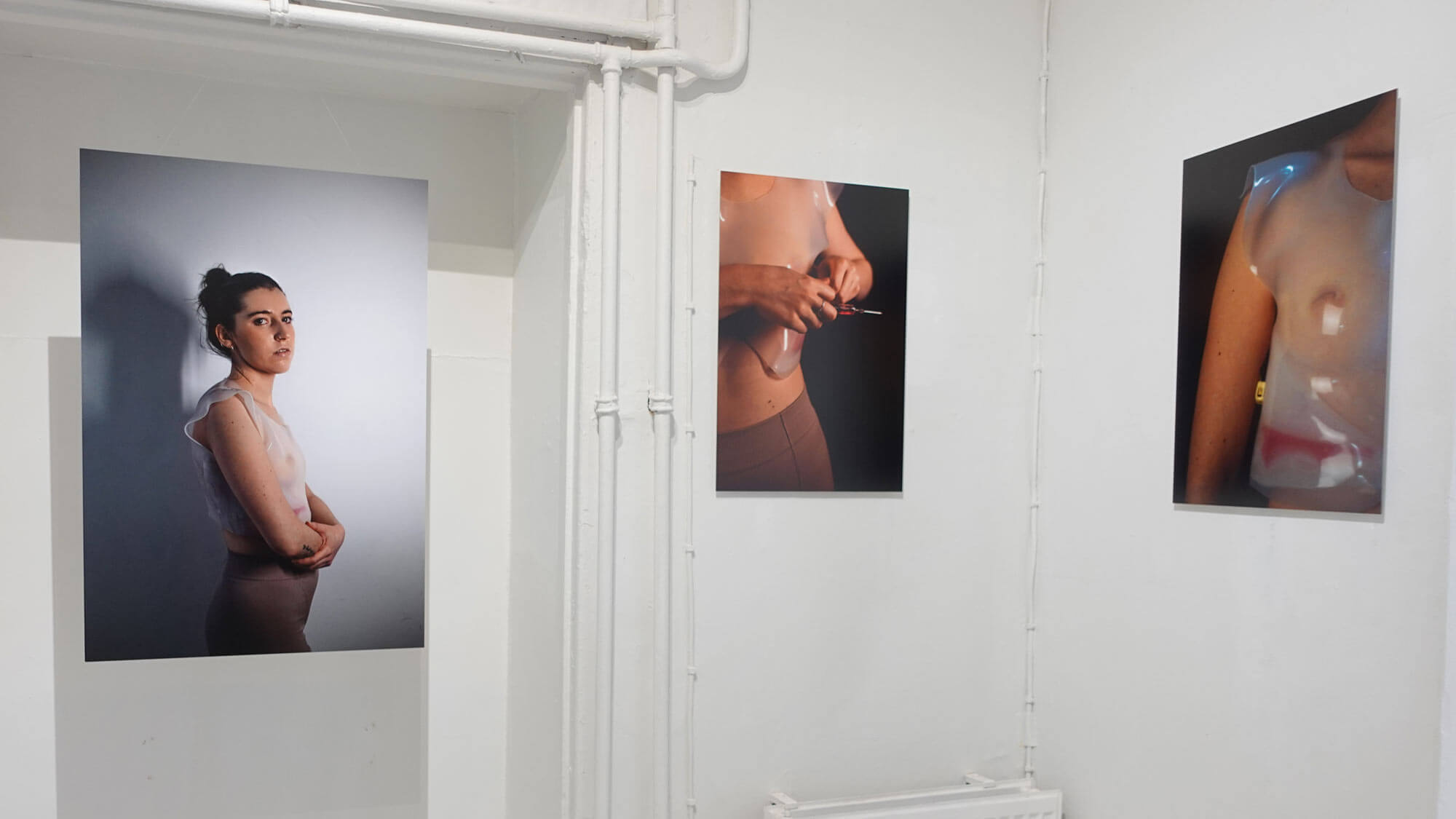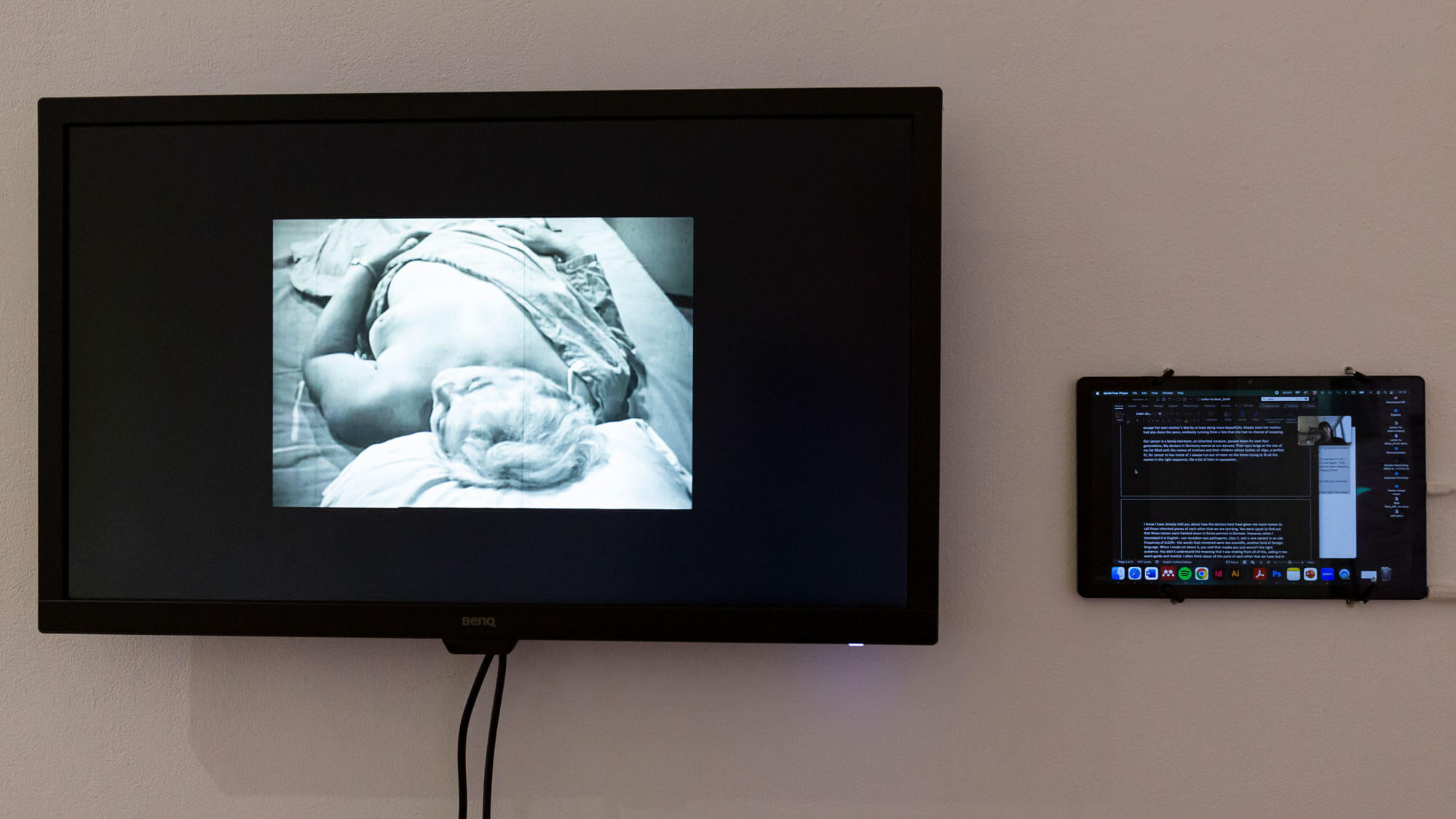Honorary Mention
Self-Care is a multi-media artwork and installation exploring notions of care, labor, intergenerational trauma, and bodies, as well as the impact of the gender binary on so-called “female” healthcare. Self-Care aims to critically examine notions of care, the role of gender in medicine, ableism, and familial relationships surrounding notions of disease. The project attempts to reclaim bodily autonomy over a body caught at the crossroads of neoliberalist healthcare agendas and genetic fatalism.
The centerpiece of Self-Care is a specially designed wearable chest binder that can house living breast cancer cells with the same genetic condition as the artist. This chest binder allows the artist to queer and reclaim their body by caring for their predestined cancer before it emerges. As a wearable, the binder also uses the cancer’s liquid environment as a means to flatten the appearance of the chest and perform gender-affirming care for the wearer. The binder is a device that questions and attempts to reclaim the body in consideration of the looming threat of bodily violence related to medical interventions for Hereditary Breast and Ovarian Cancer Syndrome.
Self-Care is a rehearsal of embodiment for bodies that are constantly transgressing the boundaries between sick and not sick. It explores the hopes, successes, and failures that emerge from attempts to “live” with a body and all its faults. The work is also an archive of the multiple mutants and subjectivities, as described by Jason Zingsheim’s Mutational Identity Theory, that come together to form a sense of self and the connection the self can have with its body. The accompanying video works titled Mommagraphy Techniques and A Letter to My Mother catalog the intergenerational experiences of embodiment and struggles concerning health and gender across four generations, the artist, their mother, their mother’s mother, and their mother’s mother’s mother.
Credits
Artist: Lyndsey Walsh
Commissioned by: Bioart Society for “m/other becomings” program
Production: Bioart Society and Art Laboratory Berlin
Mommagraphy Techniques Video: Interview with artist’s mother and remixed footage from US National Institute of Health (public domain)
Self-Care portrait photography: Pavlina Belokrenitskaia
Scientific collaboration and support: Prof. Dr. Peter Hegemann, Dr. Johannes Oppermann, Enrico Schiewer, Dr. Olga Baidukova, and Prof. Dr. Kristiina Aittomäki.
HCC1937 Cells (Berlin Installation): German Collection of Microorganisms and Cell Cultures GmbH (DSMZ)
Production facilities: Humboldt University of Berlin’s Department of Experimental Biophysics and Aalto University’s Design Factory.
Incubator: Collaboration between Lyndsey Walsh & Petteri Haverinen
Photo documentation: Asya Kaplan, Genietta Varsi, Milla Millasnoore, and Tim Deussen
Concept research: Prophylaxis project by Lyndsey Walsh with Art.ITMO.Reisdency
With support from: The Bioart Society/SOLU Space and “m/other becomings” program: Bikuben Fonden, the Nordic Culture Fund, the Nordic Culture Point and A.P. Møller Fonden. Art Laboratory Berlin and Humboldt University of Berlin’s Department of Experimental Biophysics in the context of “Matter of Flux” programme: Neu Start Kultur, Stiftung Kunstfonds, Die Beauftragte der Bundesregierung für Kultur und Medien, and the Berlin Senatsverwaltung für Kultur und Europa.
Biography
Lyndsey Walsh (US) is an artist, writer, and researcher based in Berlin, Germany. Lyndsey’s practice fuses speculative narratives and horror with autoethnographic investigations into the ruptures created by technology in the corporality of culture. Lyndsey sets out to question the cultural binaries of human-non-human, diseased-healthy, and life-machine using Crip, Queer, and intersectional feminist frameworks.
Jury Statement
As genetic testing and diagnosis is made readily available, what can we do to overcome the gaze and surveillance of medicine, and care for the fears and bonds that families experience in the face of bodily trauma? SELF-CARE is based on the artist’s personal experiences and physical exploration after learning of their mother’s breast cancer diagnosis and subsequent diagnosis of the hereditary BRCA1 gene. The wearable chest binder is specifically designed to house living BRCA1 cancer cell lines and allows the wearer to care and treat it before it turns malignant in the body. Consisting of this original device, developed with the aid of experimental biophysics, and conversations with the artist’s family, the work reexamines the politics surrounding the identity of the so-called “female body” under advanced medical surveillance. It could be said that SELF-CARE allows us to liberate our bodies from social, sexual, and reproductive expectations and, instead, encourages us to take care of our bodies.


